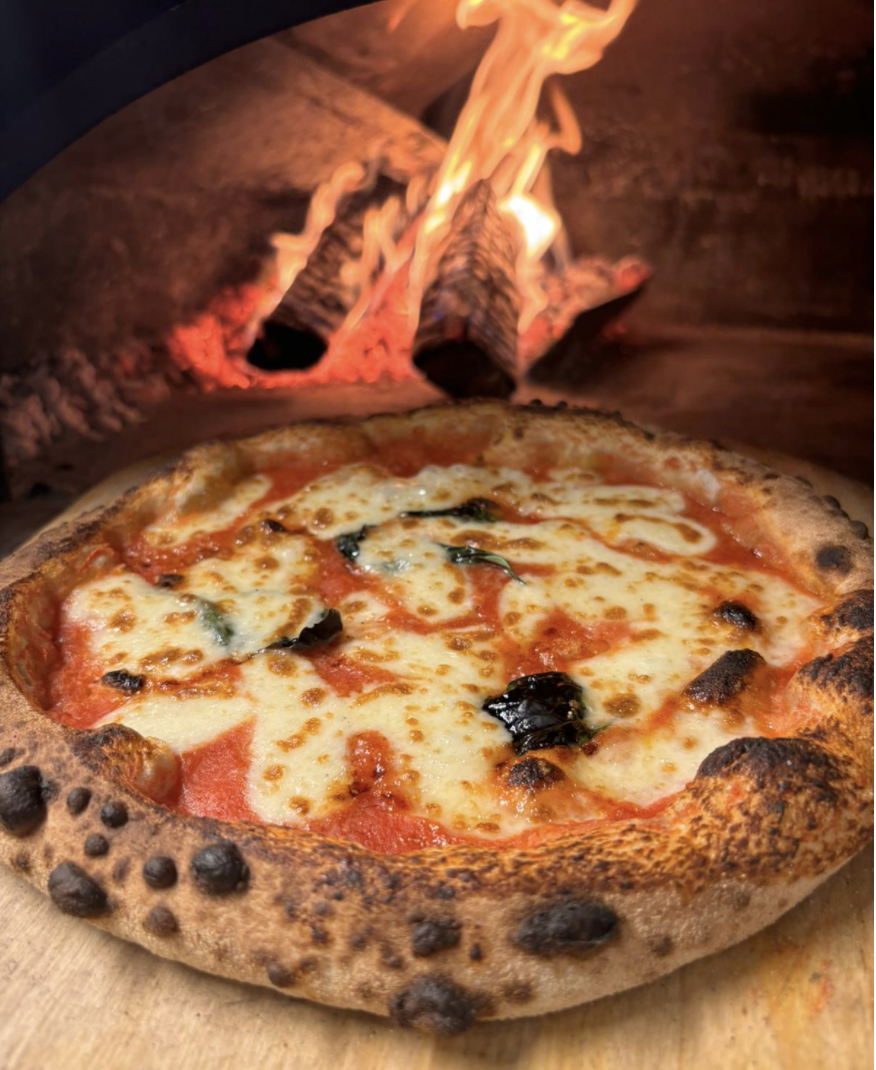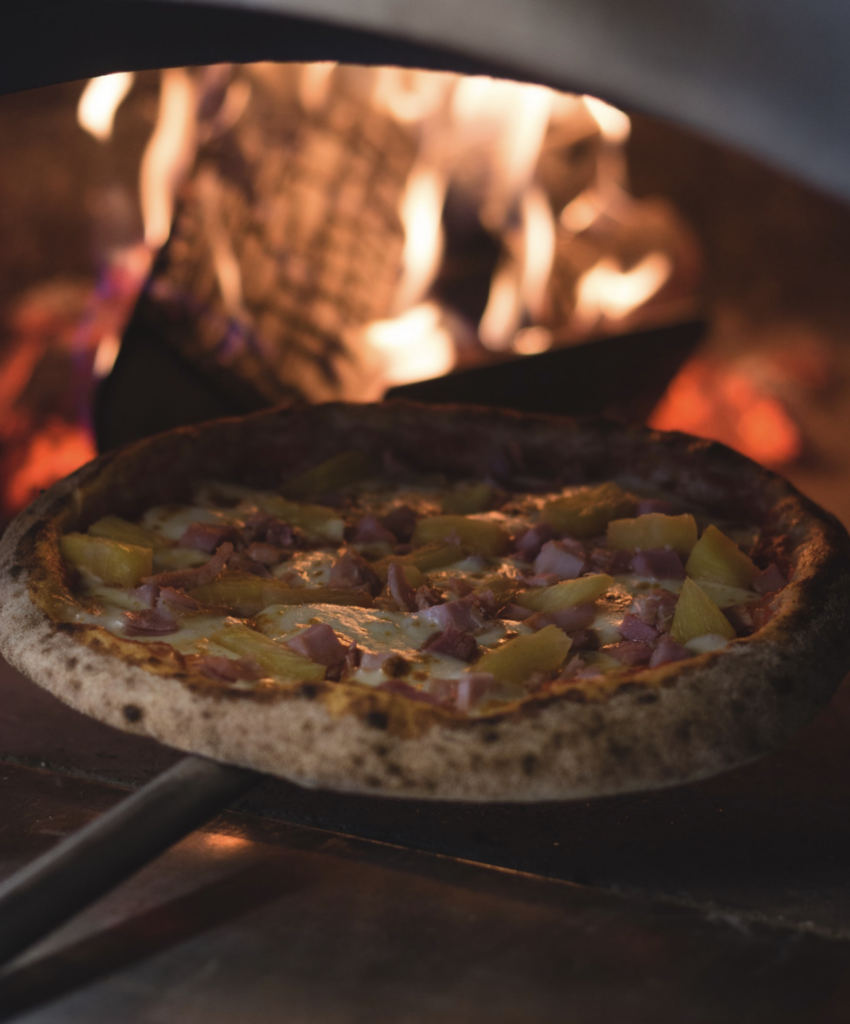When planning a wedding, every couple wants their special day to be unique, memorable, and, most importantly, enjoyed by all. The catering plays a massive role in this, as food brings people together, sparks conversations, and leaves a lasting impression. Enter Neapolitan pizza, a crowd-pleasing, authentic, and stylish catering choice that is taking UK weddings by storm.
If you’re considering catering options for your wedding, here’s why wood-fired Neapolitan pizza is the perfect choice, plus how you can make your big day unforgettable with a mobile pizza van.
The Rise of Neapolitan Pizza at Weddings
In recent years, couples across the UK have been moving away from traditional wedding meals and opting for interactive, fun, and social dining experiences. From food trucks to grazing tables, the focus is on fresh, high-quality ingredients served in a relaxed, engaging way.
Neapolitan pizza, known for its light, airy crust, rich tomato base, and fresh toppings, fits perfectly into this trend. Whether you’re planning a rustic countryside wedding, a chic city celebration, or a bohemian beach affair, a mobile pizza van serving authentic Neapolitan pizzas will keep guests satisfied and create a lively, memorable atmosphere.
What Makes Neapolitan Pizza Ideal for Weddings?
1. A Crowd-Pleasing Menu for All Tastes
One of the biggest wedding catering challenges is finding a menu that everyone loves. Neapolitan pizza is universally adored and can be easily customized to cater to all dietary needs, including:
• Classic lovers – Margherita, Marinara, and Pepperoni pizzas never fail to impress.
• Vegetarian guests – Toppings like roasted vegetables, truffle mushrooms, and burrata create delicious options.
• Vegan choices – Dairy-free cheese, fresh basil, and plant-based toppings ensure inclusivity.
• Meat enthusiasts – Prosciutto, nduja, and spicy sausage elevate the experience.
• Gluten-free options – Some vendors offer gluten-free bases, ensuring everyone gets to enjoy the feast.
2. Authenticity and Fresh Ingredients
Neapolitan pizza isn’t just a meal—it’s an experience. Made with Italian 00 flour, San Marzano tomatoes, and fresh mozzarella, each pizza is cooked in a wood-fired oven at 450°C, creating a beautifully charred, chewy crust with a soft center.
Your guests will be able to watch skilled pizzaiolos stretch the dough, top the pizzas, and fire them up in under 90 seconds, adding an interactive and engaging element to your wedding.
3. A Social Dining Experience
Weddings are about bringing people together, and nothing does that better than a shared love of pizza. Unlike sit-down meals, where guests are limited to plated portions, a pizza van allows guests to grab slices as they mingle, dance, and celebrate.
4. Perfect for Any Wedding Setting
Whether you’re hosting an outdoor summer wedding in the Cotswolds, a barn wedding in Devon, or a city-chic celebration in London, a mobile pizza van is flexible, easy to set up, and works in almost any location.
Unlike formal catering setups, a pizza truck doesn’t require extensive kitchen facilities—just a suitable space for the van and a serving area. This means you can serve fresh, piping-hot pizzas even in remote countryside venues.
5. Cost-Effective and Efficient
Weddings can be expensive, and catering often accounts for a significant portion of the budget. Traditional three-course meals can be costly, while buffets can lead to food waste.
A Neapolitan pizza van is an affordable yet high-quality alternative, offering unlimited pizza packages or per-guest pricing that allows for better budget control. Plus, pizzas are prepared quickly, meaning guests won’t have to wait long for their food.
How to Make Neapolitan Pizza a Standout Feature at Your Wedding
1. Create a Bespoke Wedding Pizza Menu
Make your wedding catering personal by curating a custom menu with your favorite pizzas. You could even name them after special moments in your relationship! For example:
• “The First Date” – Classic Margherita (because it’s timeless, like your love).
• “The Proposal” – White pizza with truffle, mozzarella, and mushrooms for a touch of luxury.
• “The Honeymoon” – Spicy nduja and honey pizza, inspired by your dream honeymoon destination.
2. Pair with Themed Drinks
Neapolitan pizza pairs beautifully with Italian-inspired drinks, such as:
• Aperol Spritz – Light, refreshing, and perfect for summer weddings.
• Prosecco – A classic sparkling wine that complements the rich tomato sauce.
• Negroni – A sophisticated cocktail that balances the flavors of the pizza.
• Craft Beers – Choose local or Italian craft beers for a casual yet refined pairing.
3. Late-Night Wedding Pizzas
If you’re looking for a way to keep guests energized on the dance floor, consider a late-night pizza service. Instead of traditional wedding evening food (like bacon rolls or cheese boards), surprise guests with freshly made Neapolitan pizzas to refuel after hours of dancing.
4. Wood-Fired Pizza as a Wedding Focal Point
A beautifully decorated pizza truck with fairy lights, rustic signage, and a cozy serving area can enhance your wedding aesthetic. Whether your theme is boho, festival-style, or elegant rustic, a wood-fired pizza van blends seamlessly into any setting.
5. Offer Fun Toppings or DIY Pizza Stations
For an interactive experience, some vendors allow guests to choose their own toppings, making it a fun, personalized touch. Kids (and adults!) will love picking their ingredients and watching their pizza be fired up before their eyes.
How to Book a Neapolitan Pizza Van for Your UK Wedding
If you’re convinced that authentic Neapolitan pizza is the perfect wedding food for your special day, here’s what to do next:
1. Find a trusted pizza caterer – Look for experienced mobile pizza vendors with great reviews and authentic wood-fired ovens.
2. Check the menu and customization options – Make sure they can cater to dietary needsand offer wedding-specific packages.
3. Visit a tasting session – If possible, sample the pizzas beforehand to ensure they meet your expectations.
4. Secure your booking early – Popular wedding caterers book up months in advance, so lock in your date as soon as possible.
5. Discuss logistics with your venue – Ensure there’s enough space for the pizza truck and that your venue allows outdoor catering.
Final Thoughts: Make Your Wedding Unforgettable with Neapolitan Pizza
Neapolitan pizza is more than just food—it’s a celebration of flavor, tradition, and togetherness. With its authentic charm, interactive experience, and universal appeal, it’s no wonder more couples in the UK are choosing wood-fired pizza vans for their wedding day.
If you’re planning your wedding and want a fun, stylish, and delicious catering option, consider Neapolitan pizza as your main meal or evening snack. Not only will it impress your guests, but it will also create a memorable, stress-free dining experience.
Looking for the Perfect Wedding Pizza Catering?
At World Pizza, we specialize in serving authentic Neapolitan pizzas from our wood-fired pizza vans, bringing a slice of Italy to weddings across the UK.
Get in touch today to check availability and customize your wedding pizza menu! Let’s make your wedding an event to remember—one slice at a time.
📞 Call us: 07845546099

📧 Email us: info@worldpizza.co.uk
🌍 Visit our website: worldpizza.co.uk






